Charleston Currents #11.46 | Oct. 7, 2019 
SCOOTING ALONG. This shrimp boat steams along on a clear summer day as the Morris Island Lighthouse looms in the background. Photo by Rob Byko, contributing photographer.
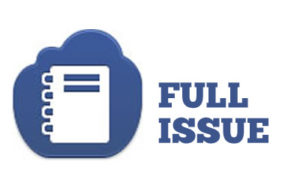 FOCUS, Palm: Whistleblowers, inspectors general and the common good
FOCUS, Palm: Whistleblowers, inspectors general and the common good
BRACK: Tecklenburg has earned a second term
IN THE SPOTLIGHT: Charleston International Airport
MY TURN, Sakran: The power of optimism
GOOD NEWS: Local schools to get $5 million for mental health support
FEEDBACK: Send us your thoughts
MYSTERY PHOTO: Old picture of old building
S.C. ENCYCLOPEDIA: Country music in South Carolina
CALENDAR: Chick Corea’s legendary jazz to grace Charleston Oct. 29
Whistleblowers, inspectors general and the common good
By Fred Palm, contributing editor | The role of a government inspector general is much in the news lately. The position has evolved from military tradition to ensure that government-funded entities use taxpayer money in careful, frugal and legal manners. We don’t want, for example, our hard-earned tax dollars wasted, ripped-off, squandered, thieved or frauded.
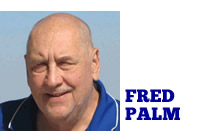 The inspector general was first used here during our Revolutionary War. General George Washington smartly recognized that his militia leaders and those that reported to them sometimes distorted, exaggerated and plain lied about their fitness and capabilities.
The inspector general was first used here during our Revolutionary War. General George Washington smartly recognized that his militia leaders and those that reported to them sometimes distorted, exaggerated and plain lied about their fitness and capabilities.
Washington appointed an inspector general modeling a practice of the Prussian Army, then the world’s elite war-fighting army. Back then, one of the practices of the Prussian Army was to require field inspections for war-fighting fitness to be conducted by knowledgeable staff who were independent and outside the reporting chain of command. They were intentionally free from the obligation to follow orders
Washington and his command staff used an inspector general to provide a potential pathway for the truth. The obligation of Washington’s inspectional forces was to objectively determine capability and to accurately report on the conditions and recommend actions needed to cure the defects found so future battle would be won. It was not about “gotcha,” blaming or looking back.
Over time, inspectors general evolved in our governments as an added layer of protection. In addition to having inspector generals to monitor the capabilities and ethical standards of officials, taxpayers are protected through whistleblowers who potentially bring forward a claim or charge of wrongdoing, unethical or illegal acts found in the government sphere. They also might also bring forward claims to settle scores because a boss did not approve an expected raise, took too long of a lunch hour or some other trite, ill-founded or misperceived event.
 Are whistleblowers blabbermouth, spies, informers, snitches, stoolies, malcontents, tattlers, rebels, “rats” or simply just negative people who are the saboteurs of organizations? In fact, they can be considered in another way — as truth-tellers, heroes, courageous, corruption-busters, fraud-fighters, champions of the good or just doing what is right. Any one of the labels might be a good fit depending on the facts and circumstances. If you have met one, you have met just that one, as they come in all forms that needs to be revealed.
Are whistleblowers blabbermouth, spies, informers, snitches, stoolies, malcontents, tattlers, rebels, “rats” or simply just negative people who are the saboteurs of organizations? In fact, they can be considered in another way — as truth-tellers, heroes, courageous, corruption-busters, fraud-fighters, champions of the good or just doing what is right. Any one of the labels might be a good fit depending on the facts and circumstances. If you have met one, you have met just that one, as they come in all forms that needs to be revealed.
The validity and accuracy of any whistleblower complaint can be determined by the responsible elected and appointed personnel in the chain of command who are the first to consider its validity. As Washington found, at times the right thing is not done because it is an embarrassment, worthy of concealment or cover up or worse. Whistleblowers have a path outside of the reporting structure. In our civilian government and our U.S. military commands, that path is to the inspector general who focuses on the mission. Inspectors general need reports from multiple sources to do their job to make accurate recommendations to management.
Inspectors general need to separate fact from fiction from a whistleblower’s report to bring forward facts or events in need of management’s attention and any suggested improvements that are needed to achieve higher levels of performance, cure corruption and better serve the taxpayers. The compelling need is to find out the elusive truth. An inspector general’s challenge is to balance these competing needs providing a path forward for the common good.
Fred Palm of Edisto Island is a retired professor of oversight and investigations at the John Jay College School of Public Management and a former executive director of the Association of Inspectors General. He writes about the Common Good.
- Have a comment? Send to: editor@charlestoncurrents.com
BRACK: Tecklenburg has earned a second term
By Andy Brack, editor and publisher | John Tecklenburg is Charleston’s only viable and reasonable choice for mayor Nov. 5 if the city wants to remain on the path to deal with flooding, traffic and more.
 Over the last four years, he’s provided critical leadership to move us forward with dozens of infrastructure projects from stormwater and flooding improvements to new fire stations, improved and new parks, road improvements, affordable housing and community centers.
Over the last four years, he’s provided critical leadership to move us forward with dozens of infrastructure projects from stormwater and flooding improvements to new fire stations, improved and new parks, road improvements, affordable housing and community centers.
His list of accomplishments is long. The only reason it isn’t even longer is because there’s a nasty cabal on city council that tries to block, obfuscate, intimidate and hinder progress. Instead of working to create a positive future for Charleston, they simmer in pettiness, mud and divisiveness. They, not Tecklenburg, need to be replaced.
Four years ago, we believed Tecklenburg was the best man to lead Charleston. We observed:
“He’s the kind of decent, service-focused leader our community needs for the post-Joe Riley era. There’s a lot to be said for common decency — for someone who is kind, generous with time and who listens. You don’t see it much these days in public officials, who often seem more obsessed about self and power than others and service.”
Tecklenburg is still the best person to lead Charleston. Re-elect him Nov. 5.
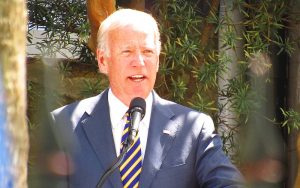 TURNING TO THE NATIONAL SCENE, seasoned politicos are a bit taken aback by former Vice President Joe Biden’s strong numbers in a new Winthrop Poll in South Carolina, particularly among black Democratic and Democratic-leaning voters.
TURNING TO THE NATIONAL SCENE, seasoned politicos are a bit taken aback by former Vice President Joe Biden’s strong numbers in a new Winthrop Poll in South Carolina, particularly among black Democratic and Democratic-leaning voters.
The poll showed he had support among almost half of African American Democrats — a big number in a huge field of Democrats running for president. Among all Democratic registered voters and those who lean that way, the poll showed Biden was the pick of 37 percent of all South Carolina Democratic voters — more than 20 points higher than the next closest candidate, U.S. Sen. Elizabeth Warren of Massachusetts. And she was the only other candidate in double digits. Fifteen of 17 other candidates polled at less than 5 percent.
So what’s going on in the Palmetto State with Biden, particularly since polls in other early voting states, such as Iowa and New Hampshire, show Warren neck-and-neck with the longtime frontrunner?
First, Biden is familiar to many in South Carolina. Not only has he visited many times through the years, but he has had deep relationships with South Carolina leaders. Second, he served as vice president for America’s first black president, a vitally crucial validator in South Carolina’s black community. As President Obama’s number two, Biden has almost universal name recognition and a carry-over effect here, where the minority vote makes a real difference, compared to almost lily-white Iowa and New Hampshire. Third, Biden is a moderate, which tends to be more appealing in South Carolina, a much more conservative state than other early voting states.
But despite Biden’s popularity in the new Winthrop snapshot of voters, political waters are churning nationally with the mess involving impeachment and the inquiry of how Ukraine is involved with American politics.
“He could be damaged from the impeachment inquiry and the negative publicity surrounding his son’s work in Ukraine,” said College of Charleston political scientist Gibbs Knotts. “Our research indicated that African American candidates and Southern candidates were at an advantage in the South Carolina Democratic primary. [But] Biden is not African American or a Southerner.”
- To read more on the presidential race, see “Biden’s poll numbers don’t tell the whole story” in Statehouse Report.
Andy Brack’s latest book, “We Can Do Better, South Carolina,” is now available in paperback and for Kindle via Amazon.
- Have a comment? Send to: editor@charlestoncurrents.com
Charleston International Airport
 Today we shine a spotlight on Charleston International Airport, which provides a first impression of the Charleston metropolitan area to over 4 million passengers a year who visit for business and leisure activities. One of three public airports operated by the Charleston County Aviation Authority, Charleston International Airport is committed to providing an unparalleled passenger experience while continuing efforts to support economic development for the Lowcountry and State of South Carolina.
Today we shine a spotlight on Charleston International Airport, which provides a first impression of the Charleston metropolitan area to over 4 million passengers a year who visit for business and leisure activities. One of three public airports operated by the Charleston County Aviation Authority, Charleston International Airport is committed to providing an unparalleled passenger experience while continuing efforts to support economic development for the Lowcountry and State of South Carolina.
Eight airlines currently serve Charleston International Airport, which have jobs that create more than $200 million in income for workers in the region. Visiting passengers also spend about $450 million a year directly in area businesses, which sustains an estimated 6,000 jobs locally. The total economic impact of the Charleston International Airport is over $1 billion dollars to the Lowcountry and State of South Carolina.
- To learn more about Charleston International Airport, please visit iflyCHS.com.
- To meet all of our underwriters,click here.
Sakran: The power of optimism
EDITOR’S NOTE: Jason Sakran is running for the District 3 seat on Charleston City Council
By Jason Sakran, special to Charleston Currents | If I didn’t know better, it would appear Charleston is suffering from so many problems and shortcomings that some believe our best days are behind us.
Based on the tone and tenor of some elected officials, candidates, and citizens — issues like flooding, affordable housing, crime, and over-development have become so powerful in themselves, they seem to drown out any discussion about hope, optimism and defining what our vision for Charleston 2050 is?
Of course if I thought all things were great, I wouldn’t have decided to throw my hat in the ring and challenge incumbent Mr. James Lewis for the District 3 seat. The fact of the matter is we have some serious challenges to solve but no issue is more important and carries as much weight as our collective ability to dream, hope and think optimistically about our future.
Optimism and hope alone will not solve our most pressing issues but they sure do provide us the energy and occasional boost we need when things seem hopeless, out of reach and so monumental, we do not know where to begin.
This election and who we choose to represent us shouldn’t be based solely on a candidates policy stance and it shouldn’t be based entirely on comfort or familiarity. Status quo comfort is part of the reason we find ourselves at this important crossroads as a city.
In order for us to prepare ourselves and chart a course for Charleston 2050, this election must be about leadership, experience and optimism. It must be about expecting and creating a brighter and better future for all of us. It must be about innovating, improving and transforming our city so we are well positioned for the next 30 years.
I have worked in this community for 15 years and there is no doubt that Charleston is a special place to call home. But for me, it is not the stately mansions, cobblestone streets, shimmering gas lanterns nor beaches that make it special — it is our people and the important stories each of us carries.
Throughout my career, I have had the good fortune of working with talented, passionate people from all walks of life. It’s the stories they’ve shared with me that remind me that family, friends, an affordable place to live, a good job, a safe neighborhood and quality schools are core values and needs we all share.
I am seeking this city council seat because at this moment, some of these core values and needs are under being threatened or in some cases, do not exist in certain parts of our community including portions of District 3. We can do better. I want to be apart of the conversation and effort to lead Charleston for the next 30 years.
- Have a comment? Send to: editor@charlestoncurrents.com
Local schools to get $5 million for mental health support
Staff reports | The Charleston County School District (CCSD) will receive almost $1 million a year for five years to expand mental health support for children through a Project Prevent grant from U.S. Department of Education.
“The need for additional social-emotional and mental health support has been recognized and supported by the CCSD Board of Trustees and the superintendent,” Jennifer Coker, the district’s executive director of Alternative Programs and Services said in a press release. “The school district has adopted mission-critical action items to address community needs. This grant allows CCSD to expand resources in our highest-need schools.”
This summer, while gun violence in North Charleston made the news, a group of educators gathered to do something to help children who are traumatized by community violence. After meeting with police, they identified three North Charleston neighborhoods in which 3,500 school-aged children live: Charleston Farms, Chicora, and Dorchester Terrace.
According to the release, the group realized that school staff needs to know how to detect trauma in children, schools need counselors and staff trained to treat trauma, and schools need to teach children skills to prevent violence.
“Our educators experience first-hand the negative impacts that exposure to trauma can have on students’ learning,” said Lisa Allison, director of Intervention and Psychological Services. “The Project Prevent grant will greatly enhance the mental health supports available to children and families in our neediest communities.”
The U.S. Department of Education offers the grant funding to school districts every five years. In 2019, the department released funding to just 16 districts throughout the U.S.
“Receiving funding for mental health and teaching our youth how to resolve problems without using violence will greatly enhance our students’ social and educational achievements,” one principal said. “What a marvelous project – a project which is greatly needed.”
Candidate news
Williamson returns to Charleston area Oct. 8. Businesswoman and author Marianne Williamson will attend The Post and Courier’s Pints and Politics 5 p.m. Oct. 8 at Palmetto Brewing Co. in Charleston. Learn more.
Warren attends Clyburn town hall Oct. 9. Massachusetts Sen. Elizabeth Warren will attend a town hall 6 p.m. Oct. 9 at the Dr. Barbara A. Vaughan Fine Arts Center Recital Hall in Orangeburg. The event is hosted by House Majority Whip Jim Clyburn of South Carolina. The event is free but RSVPs requested.
- Have a comment? Send to: editor@charlestoncurrents.com
Send us your thoughts
We’d love to get your impact in one or more ways:
Send us a letter: We love hearing from readers. Comments are limited to 250 words or less. Please include your name and contact information. Send your letters to: editor@charlestoncurrents.com. | Read our feedback policy.
Tell us what you love about the Lowcountry. Send a short comment – 100 words to 150 words – that describes something you really enjoy about the Lowcountry. It can be big or small. It can be a place, a thing or something you see. It might the bakery where you get a morning croissant or a business or government entity doing a good job. We’ll highlight your entry in a coming issue of Charleston Currents. We look forward to hearing from you.
Old picture of an old building
Here’s an old photo of an old building in the tri-county area. What and where is it? Note: Look closely; it might not be where you first think it is. Send your guess to: editor@charlestoncurrents.com. And don’t forget to include your name and the town in which you live.
Our previous Mystery Photo
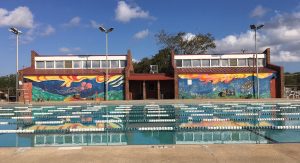 Our Sept. 30 mystery, “Colorful building” showed beautiful murals at the Martin Luther King Jr. pool in the upper part of Charleston on Jackson Street.
Our Sept. 30 mystery, “Colorful building” showed beautiful murals at the Martin Luther King Jr. pool in the upper part of Charleston on Jackson Street.
Congratulations to those who correctly identified this mystery: Chris Brooks of Mount Pleasant; Marnie Huger of Richmond, Va.; Stephen Yetman of Charleston; George Graf of Palmyra, Va.; and Allan Peel of San Antonio, Texas.
Graf and Peel provided more context from the same source, enoughpie.org: “The Martin Luther King Jr. poll mural is 80 feet of colorful mural artwork in Charleston’s Eastside celebrating our beautiful ocean and offering a message of conservation to the future. Over 10 local community artists collaborated to create a mural at the historic MLK Jr. Pool with partners like the City of Charleston Parks and Recreation and The Nature Conservancy. Eighty feet of seascape featuring jellyfish, sea turtles, coral and water connect swimmers at the city pool to the natural resources off the S.C. coast, only a few blocks away. A child-focused pledge shares three key ways to conserve our oceans. A hand-print where kids “take the pledge” is a popular interactive part of the mural.”
- Send us a mystery: If you have a photo that you believe will stump readers, send it along (but make sure to tell us what it is because it may stump us too!) Send it along to editor@charlestoncurrents.com.
HISTORY: Country music in South Carolina

Charleston’s Darius Rucker was the Country Music Association’s New Artist of the Year in 2009. In addition to his albums with the rock and roll band Hootie and the Blowfish, he’s recorded five solo country albums.
S.C. Encyclopedia | “Country” is the contemporary term for the music of common white folks of the rural South. It evolved over the years from elements of old Protestant hymns, traditional ballads of English and Scottish origins, dance music, African American musical traditions, and material of such composed traditions as designed for the minstrel stage and early-day “Tin-Pan-Alley.” Country music as known in modern America began to develop in the early and mid-1920s when it first began to appear on radio stations and phonograph recordings.
In addition to rural residents generally, the music seems to have been especially popular among textile workers in the cotton-mill villages. Country song lyrics, with their varying degrees of sadness and sentimentality, touches of rowdiness, reverence, and occasional self-deprecating humor have a way of expressing the thoughts and feelings of ordinary folk in a manner that, while unappealing to the more sophisticated, reaches their souls when other cultural forms do not. Through the years the music has become more complex, more commercial, and more electric, while still managing to retain much of its original character.
Early practitioners of country music in South Carolina included the Bouchillon Trio and Chris Bouchillon, the latter of whom drew much of his music from minstrel traditions and made several recordings for Columbia, most notably “The Talking Blues” in 1926. Early country music featured numerous string bands comprised of fiddle music with rhythm background furnished by guitar, banjo, and sometimes mandolin. Pioneer artists in this field included the Aiken County String Band, who in 1927 cut such tunes as “Carolina Stompdown” and “Harrisburg Itch” for the Okeh label.
The duo of Charlie Parker and Mack Woolbright from Union made six sides for Columbia in 1927 that included such sentimental songs as “Grandmother’s Old Arm Chair” and the humorous “The Man That Wrote Home Sweet Home Never Was a Married Man.” South Carolina–born steel guitarist Jimmie Tarlton, while living in Columbus, Georgia, recorded many numbers for Columbia beginning in 1927 as half of the duet act of Darby and Tarlton, including the earliest known versions of “Birmingham Jail” and “Columbus Stockade Blues.”
While musicians continued to record during the Great Depression, radio programs probably played a more significant role in the dissemination of country-music sounds. Stations of note that broadcast country radio programs in South Carolina included WIS Columbia, WFBC Greenville, and WSPA Spartanburg. Influential stations in neighboring states that had numerous South Carolinians in their listening audience included WBT Charlotte, WPTF Raleigh, WSB Atlanta, and on Saturday nights WSM in Nashville.
Among the notable groups heard on these stations were Mainer’s Mountaineers, the Dixon Brothers, the Monroe Brothers, Fisher Hendley, Cliff Carlisle, the Blue Sky Boys, Claude Casey’s Pine State Playboys, the Briarhoppers, and Byron Parker’s Mountaineers (later known as the WIS Hillbillies and finally as the Hired Hands), who made WIS their permanent base after 1937. The banjo-picking comic DeWitt “Snuffy” Jenkins and the fiddler Homer “Pappy” Sherill dominated this group musically. In 1938 the American Record Corporation held recording sessions in Columbia, and in 1938 and 1939 Blue Records conducted similar sessions in Rock Hill, possibly because of disputes with the musicians’ union in Charlotte.
In the past half-century country music has continued to be popular in South Carolina, although the state has contributed few performers who have attained national fame. Arthur “Guitar Boogie” Smith of Kershaw County eventually became the dominant figure on the Charlotte scene. One of the major stars of the 1960s, Bill Anderson, spent his early years in the Palmetto State, and two of the more significant figures in bluegrass music, the late vocalist Charlie Moore and the influential banjo picker Don Reno, hailed from the South Carolina Piedmont.
The late Carl Story, known as the father of bluegrass gospel music, spent the last quarter-century of his life in Greer, where he did disc-jockey work when not on the road. The gospel pianist and Greenville native Hovie Lister led the Atlanta-based Statesmen Quartet for more than a half-century. Southern gospel groups such as the contemporary Palmetto State Quartet still play a significant role on the sacred-music scene.
Although South Carolina may not have produced as many country stars as neighboring states have, country fans are abundant and many radio stations have adopted country formats. Furthermore, the Myrtle Beach area, as one of the South’s major tourist attractions, has increasingly had its share of country music venues. With such theaters and programs as the “Carolina Opry,” the Grand Strand is rapidly gaining a name as “Branson East.”
— Excerpted from an entry by Abby Gail Goodnight and Ivan M. Tribe. This entry may not have been updated since 2006. To read more about this or 2,000 other entries about South Carolina, check out The South Carolina Encyclopedia, published in 2006 by USC Press. (Information used by permission.)
Chick Corea’s legendary jazz to grace Charleston Oct. 29
Staff reports | Jazz impresario Chick Corea will bring together bass powerhouse Christian McBride and drum master Brian Blade on Oct. 29 at Charleston Gaillard Center in a trio that earned two Grammy Awards for their first outing, 2014’s landmark 3-CD set Trilogy.
“Both are master musicians and together we have an easy rapport,” Corea said of McBride and Blade. “There is a lot of give and take in our music. It’s always a lot of fun.”
Corea has attained iconic status in music. The keyboardist, composer and bandleader is a DownBeat Hall of Famer and NEA Jazz Master, as well as the fourth-most nominated artist in Grammy Awards history with 63 nods – and 22 wins, in addition to a number of Latin Grammys. From straight-ahead to avant-garde, bebop to jazz-rock fusion, children’s songs to chamber and symphonic works, Corea has touched an astonishing number of musical bases in his career since playing with the genre-shattering bands of Miles Davis in the late 1960s and early 1970s.
Yet Corea has never been more productive than in the 21st century, whether playing acoustic piano or electric keyboards, leading multiple bands, performing solo or collaborating with a who’s who of music. Underscoring this, he has been named Artist of the Year three times this decade in the DownBeat Readers Poll. Born in 1941 in Massachusetts, Corea remains a tireless creative spirit, continually reinventing himself through his art. As The New York Times has said, he is “a luminary, ebullient and eternally youthful.”
Also on the calendar:
![]() Glaude on Baldwin: 7 p.m. Oct. 10 and Oct. 11, Circular Congregational Church, 150 Meeting St., Charleston. Princeton University Professor Eddie Glaude will speak on “James Baldwin and the Moral Crisis of America Democracy” at this free lecture. Register for free tickets.
Glaude on Baldwin: 7 p.m. Oct. 10 and Oct. 11, Circular Congregational Church, 150 Meeting St., Charleston. Princeton University Professor Eddie Glaude will speak on “James Baldwin and the Moral Crisis of America Democracy” at this free lecture. Register for free tickets.
Lunch with Nathalie: Noon, Oct. 11, Halls Signature Events, 5 Faber St., Charleston (behind SNOB). You can have lunch with your favorite foodie, Nathalie Dupree, as chef Robyn Guisto prepares three courses inspired by the award-winning author’s newest book, Nathalie Dupree’s Favorite Stories and Recipes. Tickets start at $32. Doors open at 11:30 a.m. and lunch is served at noon. Buy tickets.
Wild Side celebration: 5:30 p.m. to 9 p.m., Oct. 12, Kaminski House, 1003 Front St, Georgetown, S.C. The S.C. Environmental Law Project will pay homage in its 10th annual Wild Side to the state’s Watersheds, Ocean, Wetlands — the WOW of South Carolina — as well as other milestones. Cost: $100 per adult. Learn more.
Latin American Festival: Oct. 13, Wannamaker County Park, North Charleston. The 28th annual festival will allow friends and family members to relish authentic Latin American music, art, food and children’s activities, all inspired by cultures from around the globe. Non-stop music will include everything from the beats of merengue, to reggaeton, bachata and salsa. All ages are invited to salsa to Latin rhythms by six-piece band Furia Tropikal from 1 – 2 p.m. Dance along with the Charlotte-based 12-piece band Orquesta Mayor from 3:30 – 4:30 p.m., and end the day with the Dominican merengue phenomenon El Rey Tulile from 4:30 – 6 p.m. Cost: $10. No outside food, alcohol or coolers permitted. No dogs allowed. For more information, call (843) 795-4386 or visit CharlestonCountyParks.com.
Free Verse Festival: Oct. 13-20 in locations around Charleston with a special event Oct. 28. The third year of the Free Verse Festival, Charleston’s first poetry festival, seeks “to uplift the community by providing eclectic poetry events and workshops at multiple venues in downtown and West Ashley.” Learn more online.
Coming to the Gaillard. Check out these awesome coming events at the Charleston Gaillard Center, 95 Calhoun St., Charleston:
FREE: Youth Poetry Slam: 2 p.m. Oct. 19. Artist-in-Residence Marcus Amaker will host this event as part of the Free Verse Festival. It brings together young poets of all levels for a friendly competition. The top three winners of the slam will have the opportunity to perform later that night for Free Verse, Charleston’s poetry festival. Prizes will also be awarded. Register.
Pictures at an Exhibition: 7:30 p.m. Oct. 25 and Oct. 26. The Charleston Symphony offers a special collaboration with award-winning watercolorist, Mary Whyte. A Charleston-based artist with an international reputation, Whyte will debut her collection of portraits We the People alongside the Charleston Symphony’s performance of Respighi’s Trittico Botticelliano (“Three Botticelli Pictures”), Copland’s Lincoln Portrait, and Mussorgsky’s Pictures at an Exhibition. Images of Whyte’s paintings, a portrait of one veteran from each state, will appear on stage throughout the performance. Tickets are $25 to $114.
AFFA Gala 2019: 6 p.m., Nov. 1, The Cedar Room, 701 East Bay St., Charleston. You can have one of the best nights of the year with this annual fund-raiser for AFFA that is replete with a cocktail hour, silent auction, dinner, live auction and entertainment by the Emerald Empire Band. Tickets: $180. Learn more now.
Early morning bird walks at Caw Caw: 8:30 a.m. every Wednesday and Saturday, Caw Caw Interpretive Center, Ravenel. You can learn about habitats and birds, butterflies and other organisms in this two-hour session. Registration is not required, but participants are to be 15 and up. $10 per person or free to Gold Pass holders. More: http://www.CharlestonCountyParks.com.
AREA MARKETS
WEDNESDAYS. The West Ashley Farmers Market is every Wednesday from 3 p.m. to 7 p.m. in Ackerman Park off Sycamore Avenue in West Ashley. The last week of the market will be the first week of October. More.
FRIDAYS/SATURDAYS: Night Market. Every Friday and Saturday from 6:30 p.m. to 10:30 p.m. for the rest of the year, you can shop with 108 vendors, including artists and craftsmen, at the night market on Market Street between East Bay and Church streets. It’s more than four blocks of local shopping and fun. Free.
SATURDAYS: Johns Island Farmers Market operates each Saturday from 9:30 a.m. to 1:30 p.m. year-round with more than 50 local farmers and vendors, food trucks, music and more. The market is located on the campus of Charleston Collegiate School, 2024 Academy Road, Johns Island
SATURDAYS: The Charleston Farmers Market is open 8 a.m. to 2 p.m. in Marion Square each Saturday through Nov. 30. More info.
NOTE: The Mount Pleasant Farmers Market weekly market on Tuesdays finished in September. The next opportunity to shop is a special Dec. 7 holiday market and craft show at the market pavillion at Moultrie Middle School, 645 Coleman Blvd., Mount Pleasant. Time: 11 a.m to 4 p.m. Free parking. Lots of activities. More info.
- If you have an event to list on our calendar, please send it to feedback@charlestoncurrents.com for consideration. The calendar is updated weekly on Mondays.
If you like what you’ve been reading, how about considering a contribution so that we can continue to provide you with good news about Charleston and the Lowcountry. Interested? Just click the image below.
OUR UNDERWRITERS
Charleston Currents is an underwriter-supported weekly online journal of good news about the Charleston area and Lowcountry of South Carolina.
- Meet our underwriters
- To learn more about how your organization or business can benefit, click here to contact us. Or give us a holler on the phone at: 843.670.3996.
OUR TEAM
Charleston Currents offers insightful community comment and good news on events each week. It cuts through the information clutter to offer the best of what’s happening locally.
- Mailing address: P.O. Box. 22261 | Charleston, SC 29413
- Phone: 843.670.3996
Charleston Currents is provided to you weekly by:
- Editor and publisher: Andy Brack, 843.670.3996
- Contributing editor, common good, Fred Palm
- Contributing editor, money: Kyra Morris
- Contributing editor, Palmetto Poem: Marjory Wentworth
- Contributing editor, real estate: Digit Matheny
- Contributing photographer: Rob Byko
SUBSCRIBE FOR FREE
Subscriptions to Charleston Currents are free.
- Click here to subscribe.
- Unsubscribe. We don’t want to lose you as a reader of Charleston Currents, but if you must unsubscribe, you will have to do it through the email edition you receive. Just go to the bottom of any of your weekly newsletters and click the “unsubscribe” function. If that doesn’t work, please send us an email with the word “unsubscribe” in the subject line.
- © 2008-2019, Statehouse Report, LLC. All rights reserved. Charleston Currents is published every Monday by Statehouse Report LLC, PO Box 22261, Charleston, SC 29413.







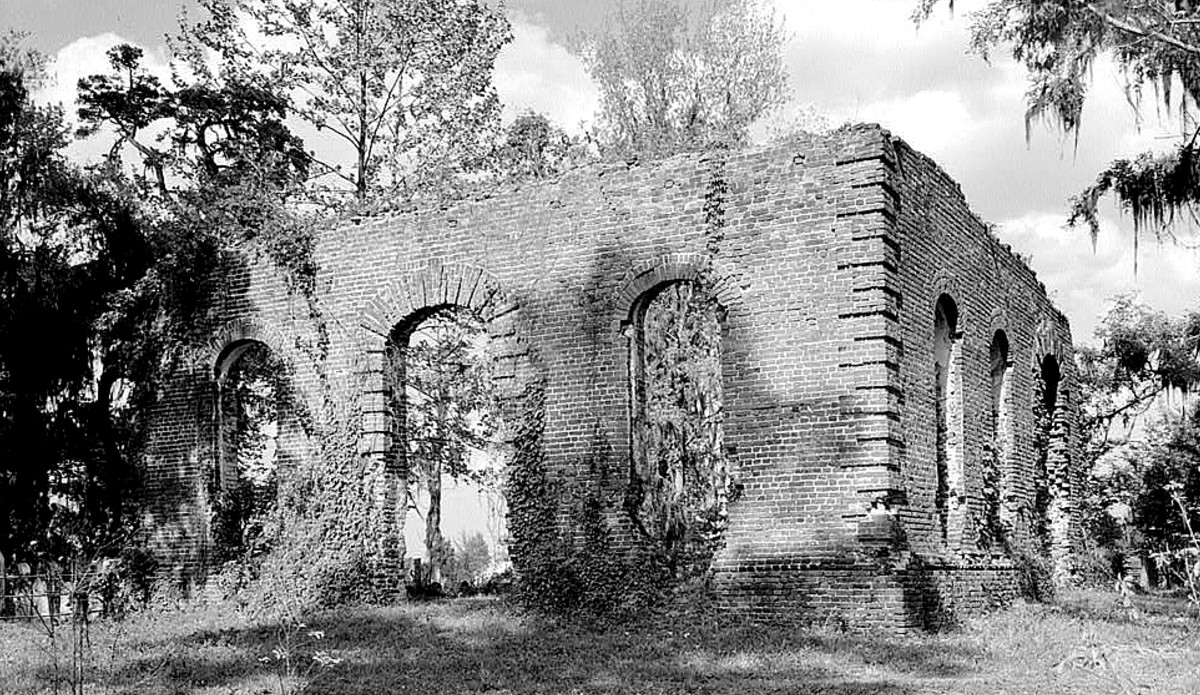
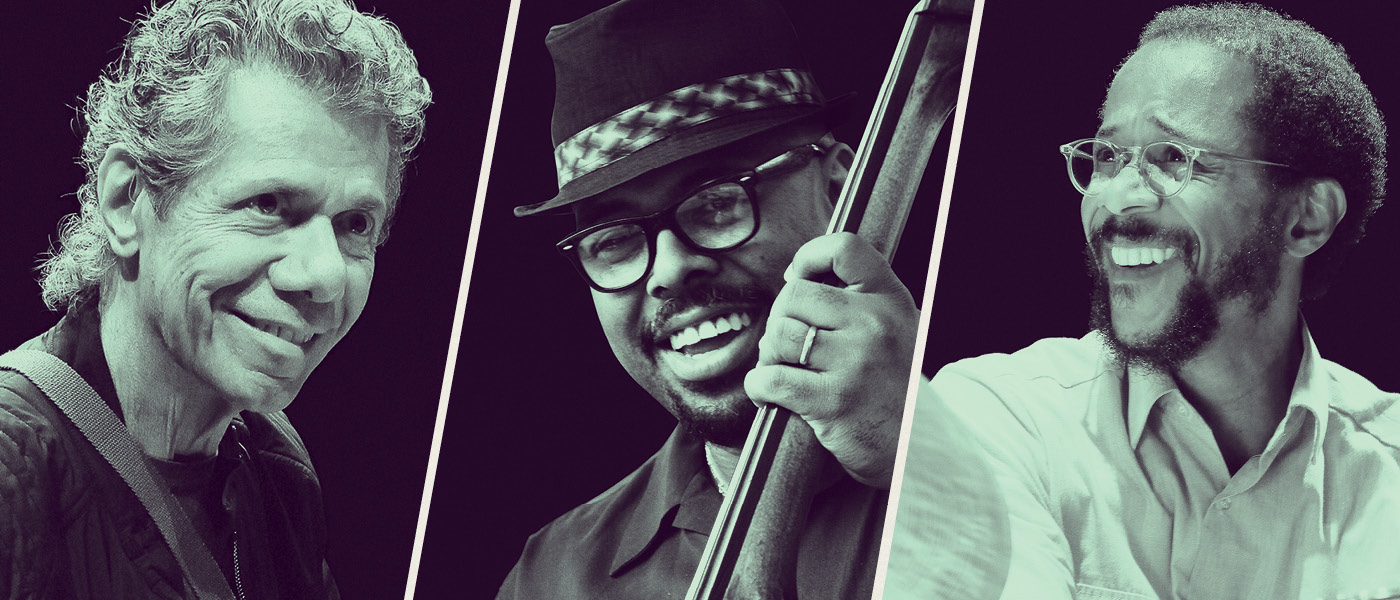


 We Can Do Better, South Carolina!
We Can Do Better, South Carolina!























